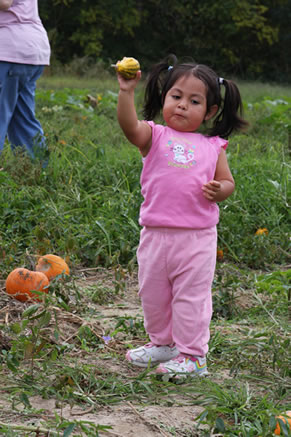Audio/Visual
What is Early Intervention in Virginia? (external website) | VA's Integrated Training Collaborative
This video features Virginia service providers, families, and administrators as they describe early intervention. Video clips and photos are also featured to help viewers understand what early intervention looks like and why it works.
For guidance about how to use this video to explain early intervention, check out the following two resources:
- Letter to Community Partner PDF
- Explaining Early Intervention: Virginia’s Statement PDF
Early Intervention: A Routines-Based Approach Part 1: Traditional vs. Routines (external site, video) | Related Resource Page
Early Intervention Videos & Resources
Early Intervention: A Routines-Based Approach Part 2: What Intervention Can (and Should) Look Like (external site, video) | Related Resource Page
Early Intervention: A Routines-Based Approach Part 3: Changing the Mindset (external site, video) | Related Resource Page
Early Intervention Home Visits (external site, video) | Connecticut Birth to Three System
This video shows and discusses what families can expect on early intervention visits. The video was developed by Connecticut's Birth to Three System but can be very useful for any family who is new to EI. The video includes explanations about a primary provider model, parent coaching, and using typical daily routines as the context for intervention. The video is also available in Spanish.
CONNECT Modules 5-Step Learning Cycle (external website)
Scientists from the Frank Porter Graham Child Development Institute describe their Five Step Learning Cycle to support the use of evidence-based practices. This short video provides a brief overview.
Impact of Early Intervention
 The Benefits of Early Intervention – Erin & Arlo (external site, video) | Related Resource Page
The Benefits of Early Intervention – Erin & Arlo (external site, video) | Related Resource Page
Erin describes how early intervention has helped her son, Arlo, thrive.
 The Benefits of Early Intervention – Kurt Kondrick (external site, video) | Related Resource Page
The Benefits of Early Intervention – Kurt Kondrick (external site, video) | Related Resource Page
Kurt describes how well his daughter Chloe has adjusted with a solid foundation from early intervention.
 Early Childhood Intervention: The Power of the Family (external site, video) |
Open Society Foundations
Early Childhood Intervention: The Power of the Family (external site, video) |
Open Society Foundations
This video features experts from around the world describing key aspects of early childhood intervention and its benefits to children and families.
 Early Intervention Saved His Life (external site, video) | Related Resource Page
Early Intervention Saved His Life (external site, video) | Related Resource Page
Carol describes how she believes that early intervention saved her son’s social-emotional life.
 The Importance of Service Coordination – Charlie House (external site, video) | Related Resource Page
The Importance of Service Coordination – Charlie House (external site, video) | Related Resource Page
Hear how one father describes the support his family received from their service coordinator and the importance of this support to his family.
 Liam's Story, A Mother's Voice (external site, video)
Liam's Story, A Mother's Voice (external site, video)
Jamie, Liam's mother, reads a letter she wrote to the VA General Assembly about how important early intervention has been in her family's life. In the video, you will meet Jamie and Liam and see how, through collaboration between his family and his early intervention providers, Liam is able to communicate, use a computer, and move about at home, on trips to a museum and out to get ice cream with his family.
 Brandon's Story, A Mother's Voice (external site, video)
Brandon's Story, A Mother's Voice (external site, video)
Meet Brandon’s mother as she talks about the importance and impact of early intervention on her son’s life. You’ll also hear from Brandon, who is a teenager and talented musician.






 Early Intervention: What It Is & Why It Works
Early Intervention: What It Is & Why It Works




 Liam's Story, A Mother's Voice
Liam's Story, A Mother's Voice Brandon's Story, A Mother's Voice
Brandon's Story, A Mother's Voice